RedLancer
Posts: 4314
Joined: 11/16/2005
From: UK
Status: offline

|
Those of you who have played WiTW will be aware of the East Front option. This modelled the German commitment to the war with the Soviets (and to Norway) and allowed the German player to phase transfers between those sectors and the war against the Allies as they wished. Extract too much and the Soviets advanced more quickly, send more than historical and you had to the chance to extend the game into the summer of 1945 – picking up VP as you did so.
Well WiTE2 radically expands this concept and covers the totality of the ground and air commitment for Nazi Germany and its Allies and the Soviet Union. It does this using two related concepts, Theatre Boxes and Events.
Theatre Boxes
That wider war is divided into Theatres and represented as abstract boxes. Each has a ‘combat intensity’ that is used to determine likely casualties (and thus the need for replacements and so on) and a desired garrison level. For the Axis these cover Western Europe, Italy, North Africa, the Balkans, Finland, Norway and anti-partisan operations in the Soviet Union. For the Soviets they are Northern, Trans Caucasus and Far East. In addition both sides have an abstract (but very important) ‘Reserve’ Theatre.
The Theatre boxes are usually not shown but can be readily accessed from the jump map or the mouse (or hot keys). When accessed, they are roughly laid out geographically but the Axis reserve is centred over Berlin and the Soviet one is placed in Siberia.
This shows the Western Europe theatre early in the game (t12).
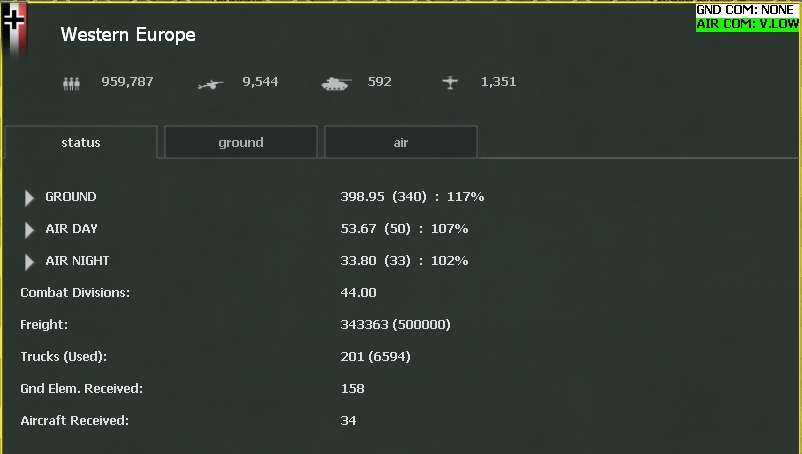
How much you can see and how it is displayed will depend on the zoom level you have chosen but that is a typical screen. Few things to note, as you’d expect at this stage of the war, there is no Ground Combat and the air combat is very low intensity. Come 1943 and that will be a lot higher creating a steady stream of losses for the Luftwaffe. Once the Allies invade France, the ground combat becomes intense, again generating losses that need to be replenished – possibly at the expense of your forces fighting the Soviets.
Note the percentages next to the ground and air sections, those indicate if you meet the baseline required garrison. We’ll come back to what this means below.
If you open the ground tab, you see the actual units in the Theatre.
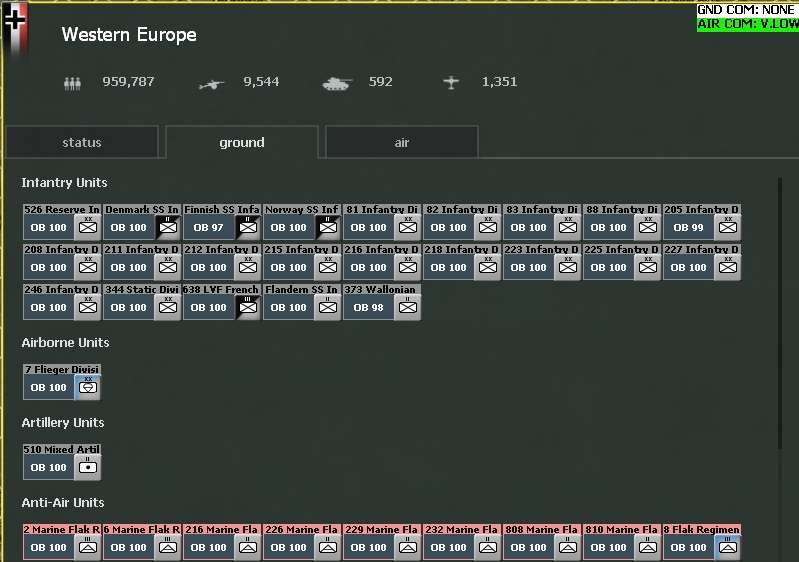
Again, your zoom level will influence what can be seen but clicking on any of those formations will open the standard unit tab you are used to from WiTE1 and WiTW.
As a note, you can’t see your opponent’s theatre boxes but you do know, from the OOB tab, how many men, guns and planes they have allocated to their theatres as:
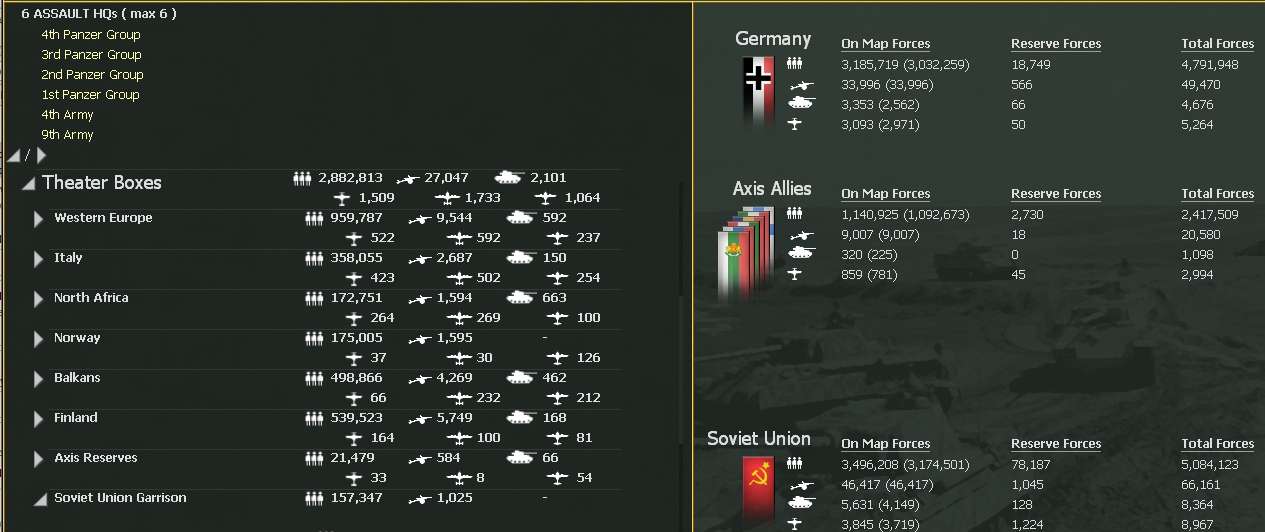
So this is the OOB screen for the same turn, note it repeats the numbers in Western Europe (you can actually expand that entry to see the individual units as above … you can also review these units using the Commander’s Report). All you know about the Soviets is that they have some 1.5 million men in their non-reserve theatres (the difference between on-map+reserve and total forces).
Managing the Theatres
You have two options:
In one, you accept the scripted pattern of moves into and out of the Theatres as happened historically. Replacements and new equipment will flow automatically to the theatres (if available) and this is one way that on-map performance influences off map performance. Lose too much in Russia and its not available to replenish your forces in North Africa (and the reverse is true, minimise your losses and those other sectors may be stronger). Finally you can voluntarily send extra units (ground and air) to a Theatre to build up your forces (you can’t reclaim these but it’s a good strategy).
The alternative is you take control. Scripted historical transfers will still happen but you can step in and cancel them. You can also withdraw some units for service elsewhere or swap units as you wish. There are a few constraints, you can’t send the Hungarians to fight in North Africa and you can’t reduce a theatre to below 90% of its requirements (ie the value in the first image) by removing units (you can go below this by not sending reinforcements).
So the first view is that this is an excellent idea to reduce everything else to the bare minimum and throw all those assets at the Soviets (or the Germans). Well … that is a quick way to lose the war (unless it pays off very quickly).
Victory Points and Events
If you are below the threshold values, there is a chance in a given turn you will lose 1 VP and 1 Admin Pt for every such failure. So Western Europe could cost you 3 VP per turn (the three categories are calculated separately). An incautious German player could be losing 10+ VP per turn as a result, so if you want to under-invest in the wider war, you had better win the struggle against the Soviet Union very quickly.
Now the reverse is true, if you are over the threshold values, you gain a steady stream of VP – note in loki100’s AAR he notes he has gained more VP this way than for early capture of German held cities.
This is also one way the Events system comes into play. Each of the other campaigns has a track of events that fire more or less historically reflecting the big shifts in that theatre.
So for example:
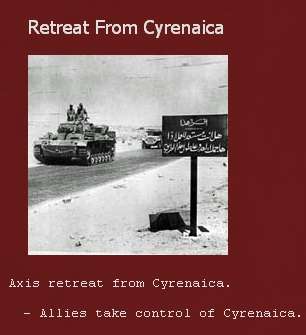
If you are below the garrison thresholds, these start to occur earlier, if you are over the thresholds, they can be delayed. Since North Africa in the end leads to the invasion of Italy that has consequences. Being behind in Western Europe may trigger an early Second Front. If the Soviets are ahead in their Northern Theatre, there is the possibility of an early Finnish collapse.
The National Reserve
While this is a theatre it has a very different role to the others. It is under full player control all the time (there are a few minimal restrictions on how you use it) and can be used as you see fit.
Units that are destroyed and can now be rebuilt are assigned to it as are many freshly raised formations. This allows you to control how fast such formations can draw on your available elements such as infantry squads, tanks and guns. If you place a formation to ‘REFIT’ and it is in the reserve it has a priority on available elements as it builds up. This is a double edged sword. It is the way to quickly outfit fresh formations but put too many on refit at any one time and your on map formations will suffer for a lack of replacements and reinforcements.
For air units, the reserve is where you can train up formations with low experience pilots, if you wish using obsolete planes, before being deployed to combat.
In addition to being a key part of your unit production approach, the reserve can be just that: a strategic reserve. This is probably of more use to the Soviets but leaving the equivalent of several armies in the reserve (with their HQs) can give you an emergency force to respond to a sudden disaster.
While the default is that units from the reserve arrive on the map at Moscow or Berlin you can alter this to be any rail hex, more than 10 hexes from the enemy, in territory you controlled on 22 June 1941.
Events
There are various types of these. Some are just for flavour, picking up on events elsewhere in the war:
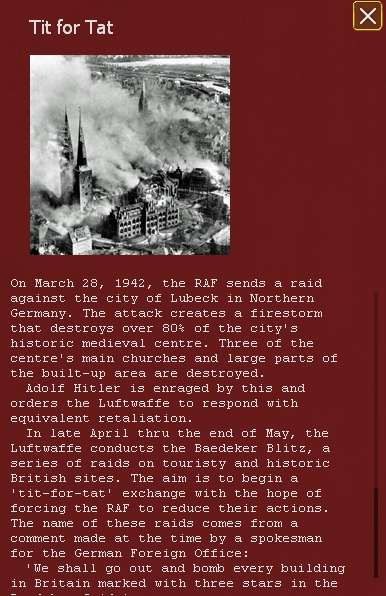
As we have discussed, some affect the progress and intensity of the war in the various Theatre Boxes, such as:
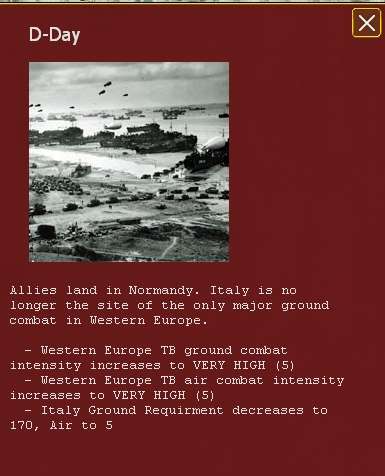
Note that this may also amend the garrison requirements and the combat intensity in a given Theatre.
Some report the gain or loss of VP (again as above):
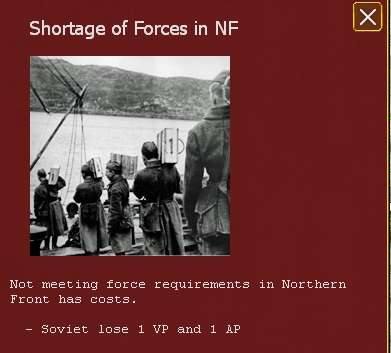
Some award one side or the other one-off (or short term) allocations of manpower or administrative points:
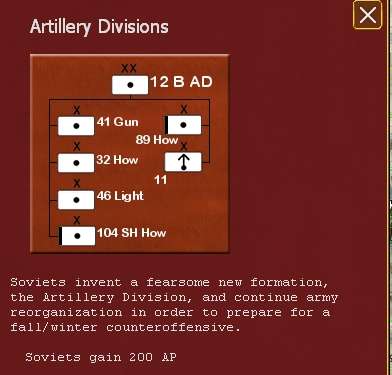
Some are used to model the Allied strategic bombing offensive:
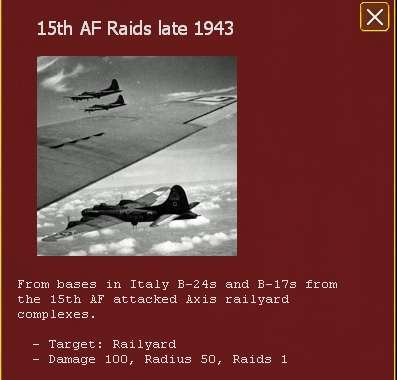
And some open up new event chains when particular conditions are met:
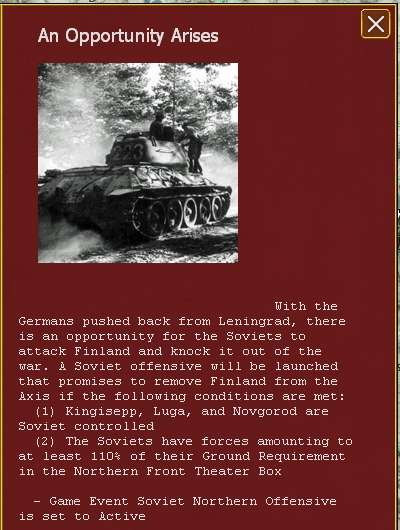
The in-game editor can be used to create these, setting criteria and likelihood and the consequences. This is one of the ways in which WiTE2 is far more moddable than WiTE1. You can use these events to create all sorts of conditional events as you design scenarios (or amend those supplied with the game).
_____________________________
John
WitE2 Asst Producer
WitE & WitW Dev
|
 Printable Version
Printable Version
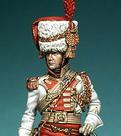















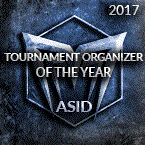


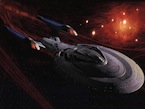



 , thanks!
, thanks!

 New Messages
New Messages No New Messages
No New Messages Hot Topic w/ New Messages
Hot Topic w/ New Messages Hot Topic w/o New Messages
Hot Topic w/o New Messages Locked w/ New Messages
Locked w/ New Messages Locked w/o New Messages
Locked w/o New Messages Post New Thread
Post New Thread